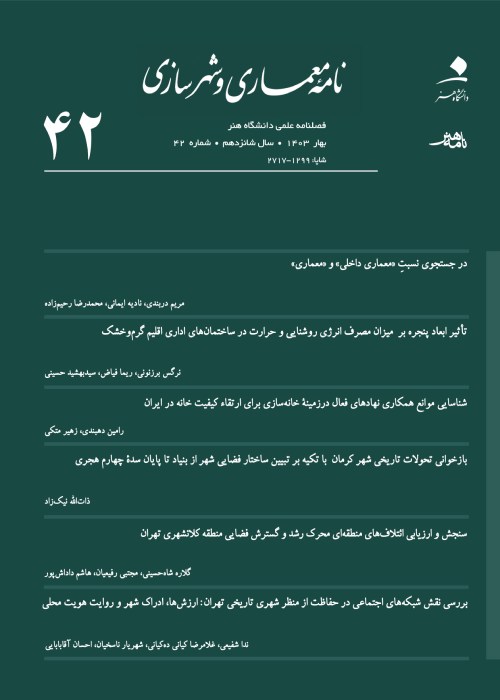Sound-perception System of Water in the Persian Garden Case studies: Fin and Shazdeh Gardens
Author(s):
Abstract:
The fragility of the historical gardens, as well as the importance of "intangible cultural heritage" with an approach toward qualitative and aesthetic aspects for the users motivate us to document the atmosphere of these gardens. There are much studies about morphology and formal structure of Persian gardens included on UNESCO's World Heritage List on 2011. The Persian gardens are also introduced as mysterious and poetic spaces in the literature and descriptive texts, without enough necessary scientific studies on their atmosphere and user's perception. In fact, the historical gardens consist of many elements that play their roles to constitute the space, including water. Water is not only a vital element for maintaining the garden life, in particular where it is known to be scarce, but also it is the constituent element of the ambience with its sensory capacities like visual, auditory and others sensory modalities. With the developments of modern sciences and the notion of environmental sustainability, it seems that water has been turned into mere H2O as a material for use which tends to lose its sensory quality. We follow the hypothesis that despite of its rarity in the arid context of the typical Persian garden and inevitably the minimal use of water in gardens space, this element has its perceptive role for the users/perceiver, and particularly in the domain of auditory perception that will be studied in this paper. To examine the sensory relationships of this resource, among several typical gardens, two gardens are selected in the desert area of Iran: Fin garden situated in Kashan, and Shazdeh [Shahzadeh] garden near Kerman possess the indicators for developing the methodologies of the research. The methods used to evaluate the impact of water on the auditory perception in the two gardens consists of three phases: first, the observations of spaces and uses in situ to identify the objective dimensions of the presence of water. In this phase, the sound of water is also recorded in the gardens by digital recorder. Second, performing some surveys concerning sensorial memory, based on the memories and narratives of the visitors allows us to formulate an initial interpretation of the memories of ambiance in connection water. Finally and in the third phase, we collect verbal comments in situ of perception of motion from some visitors who participated and expressed sound effects of water in the gardens. The result of the above studies are analyzed and collected inductively in a list of the sound effects that are categorized in three types: spatial, temporal and semantic in accordance with the reference "Répertoire des effets sonores (Sonic experiences: a guide for everyday sound). The effects derived from this study are anticipation, sound attraction, reverberation, resonance and filtering as the spatial effects; also rhythm, cross-fade and staccato, as temporal effects; and finally the semantic effects are listed as synecdoche, erasure, remanence, mask and immersion with regard to presence of water in the two Persian gardens. These sound effects can be used as the potentials of water in landscape domain to create a water soundscape.
Keywords:
Language:
Persian
Published:
Journal of Architecture and Urban Planning, Volume:9 Issue: 18, 2017
Pages:
81 to 98
magiran.com/p1715269
دانلود و مطالعه متن این مقاله با یکی از روشهای زیر امکان پذیر است:
اشتراک شخصی
با عضویت و پرداخت آنلاین حق اشتراک یکساله به مبلغ 1,390,000ريال میتوانید 70 عنوان مطلب دانلود کنید!
اشتراک سازمانی
به کتابخانه دانشگاه یا محل کار خود پیشنهاد کنید تا اشتراک سازمانی این پایگاه را برای دسترسی نامحدود همه کاربران به متن مطالب تهیه نمایند!
توجه!
- حق عضویت دریافتی صرف حمایت از نشریات عضو و نگهداری، تکمیل و توسعه مگیران میشود.
- پرداخت حق اشتراک و دانلود مقالات اجازه بازنشر آن در سایر رسانههای چاپی و دیجیتال را به کاربر نمیدهد.
In order to view content subscription is required
Personal subscription
Subscribe magiran.com for 70 € euros via PayPal and download 70 articles during a year.
Organization subscription
Please contact us to subscribe your university or library for unlimited access!


